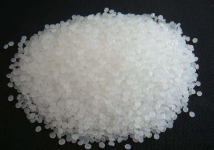read: 496 time:2025-07-02 15:03:06 from:化易天下
In the world of organic chemistry, understanding the basicity of compounds like piperidine and pyridine is crucial for applications in synthesis, drug development, and various industrial processes. This article delves into why piperidine is more basic than pyridine, breaking down the fundamental factors that contribute to the difference in their basicity.
Piperidine and pyridine are both nitrogen-containing heterocyclic compounds, but their structures are notably different. Piperidine is a six-membered saturated ring with a nitrogen atom, where all carbon atoms are sp³-hybridized, leading to a non-planar, chair-like conformation. In contrast, pyridine is an aromatic six-membered ring with one nitrogen atom, where all atoms, including nitrogen, are sp²-hybridized, resulting in a planar structure.
This difference in hybridization is a key reason why piperidine is more basic than pyridine. The sp³-hybridized nitrogen in piperidine has a lone pair of electrons in an sp³ orbital, which is more s-character and thus more available for protonation. On the other hand, the nitrogen lone pair in pyridine is in an sp² orbital, where it is more tightly held due to the greater s-character, making it less available for protonation.
Another critical factor is the distribution of electron density in the two compounds. Piperidine, being a saturated ring, does not exhibit aromaticity, and its nitrogen lone pair is free to participate in basic reactions without being delocalized. In pyridine, the nitrogen lone pair does not contribute to the aromatic π-system, but the aromaticity of the ring itself makes the nitrogen less electron-rich compared to piperidine. This reduced electron density on the nitrogen in pyridine decreases its ability to donate electrons, making pyridine less basic.
Moreover, the aromatic system in pyridine stabilizes the molecule through resonance, making it less reactive towards protonation. This stabilization is another reason why piperidine is more basic than pyridine; the non-aromatic nature of piperidine's nitrogen allows it to react more readily with acids.
Proton affinity, which is a measure of how strongly a compound can attract and hold onto a proton, is higher in piperidine than in pyridine. This is due to the reasons discussed above—namely, the availability of the lone pair on the nitrogen in piperidine and the lack of aromatic stabilization that makes piperidine more reactive. Additionally, in polar solvents, piperidine’s basicity is further enhanced as the solvent stabilizes the protonated form more effectively than in pyridine, where the aromatic ring can lead to less stabilization.
In summary, why piperidine is more basic than pyridine can be attributed to several factors: the sp³ hybridization of the nitrogen atom in piperidine, the absence of aromaticity, and a higher proton affinity. The combination of these factors makes the nitrogen in piperidine more readily available to accept a proton, thereby increasing its basicity compared to pyridine. Understanding these differences is essential for chemists when selecting bases for various reactions, particularly in synthesis and industrial applications where the strength of a base can significantly influence the outcome of a reaction.

Jincheng Petrochemical's 300000 ton polypropylene plant successfully trial production, 2024 polypropylene market analysis

The ABS market remains sluggish, what is the future direction?

Market differentiation of bisphenol A intensifies: prices rise in East China, while prices generally decline in other regions

The production method and process flow of silicone acrylic lotion, and what are the common raw materials